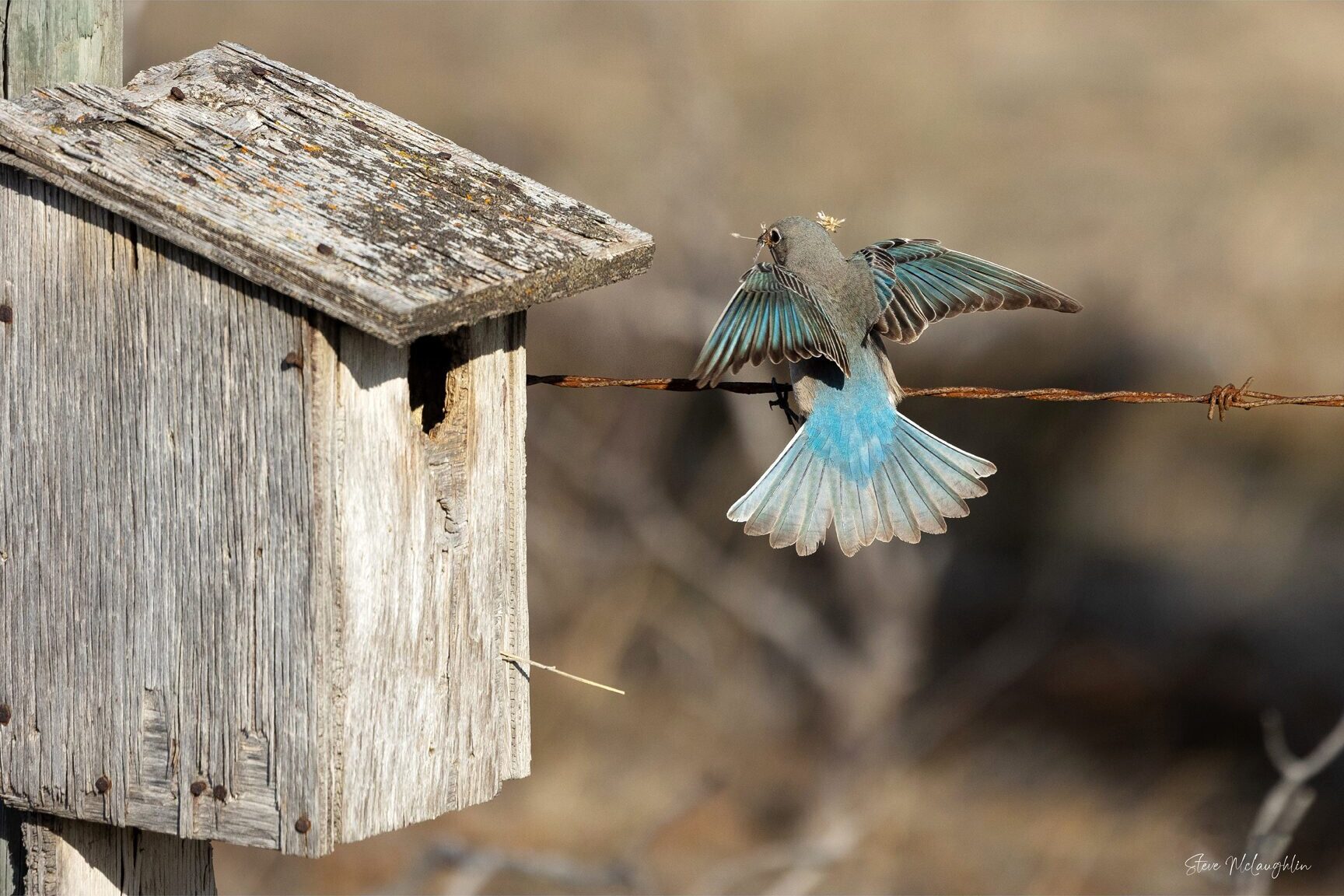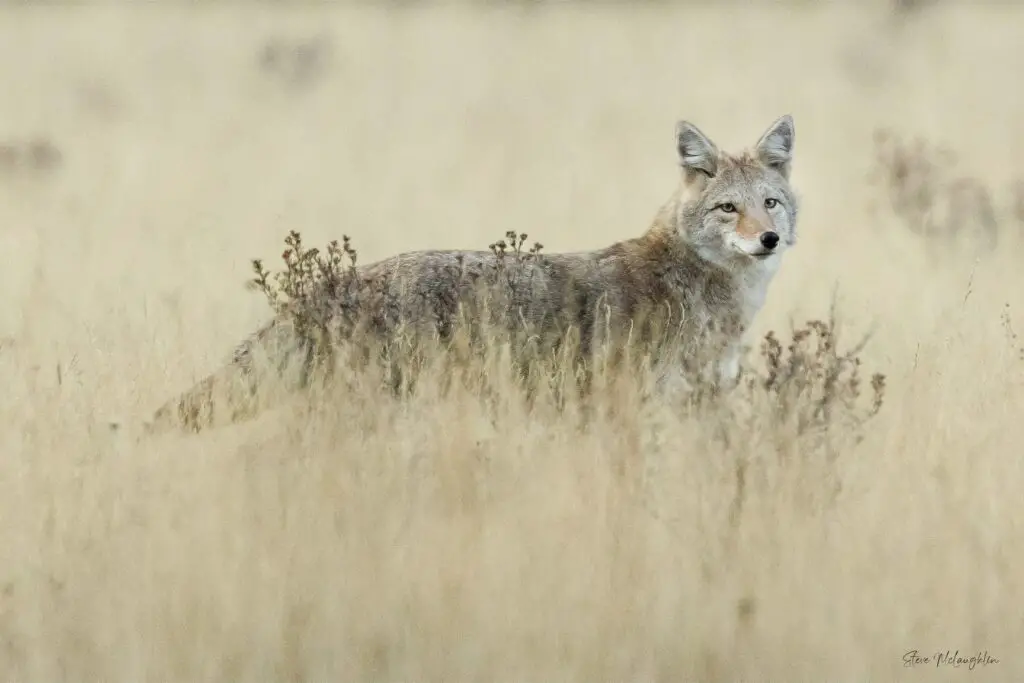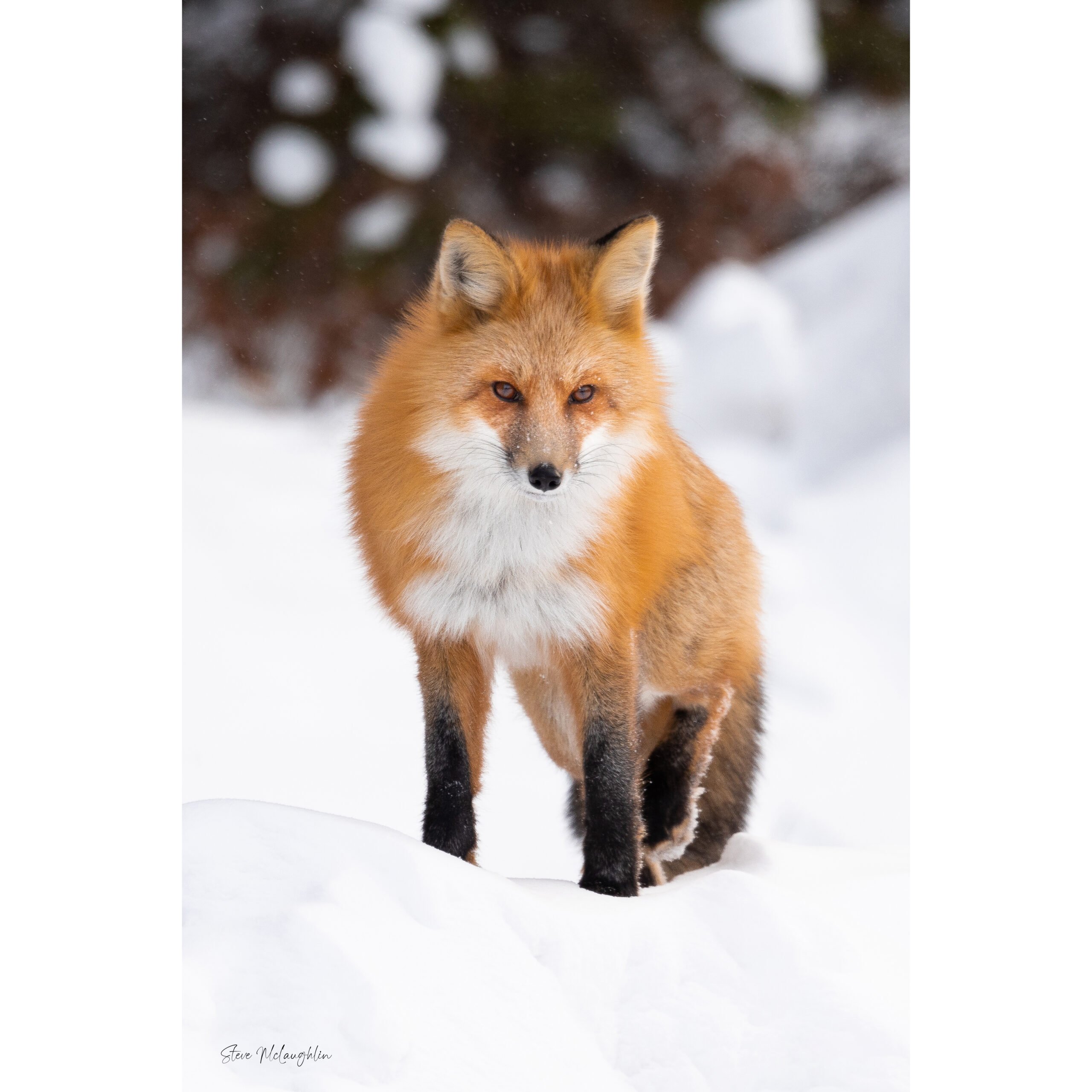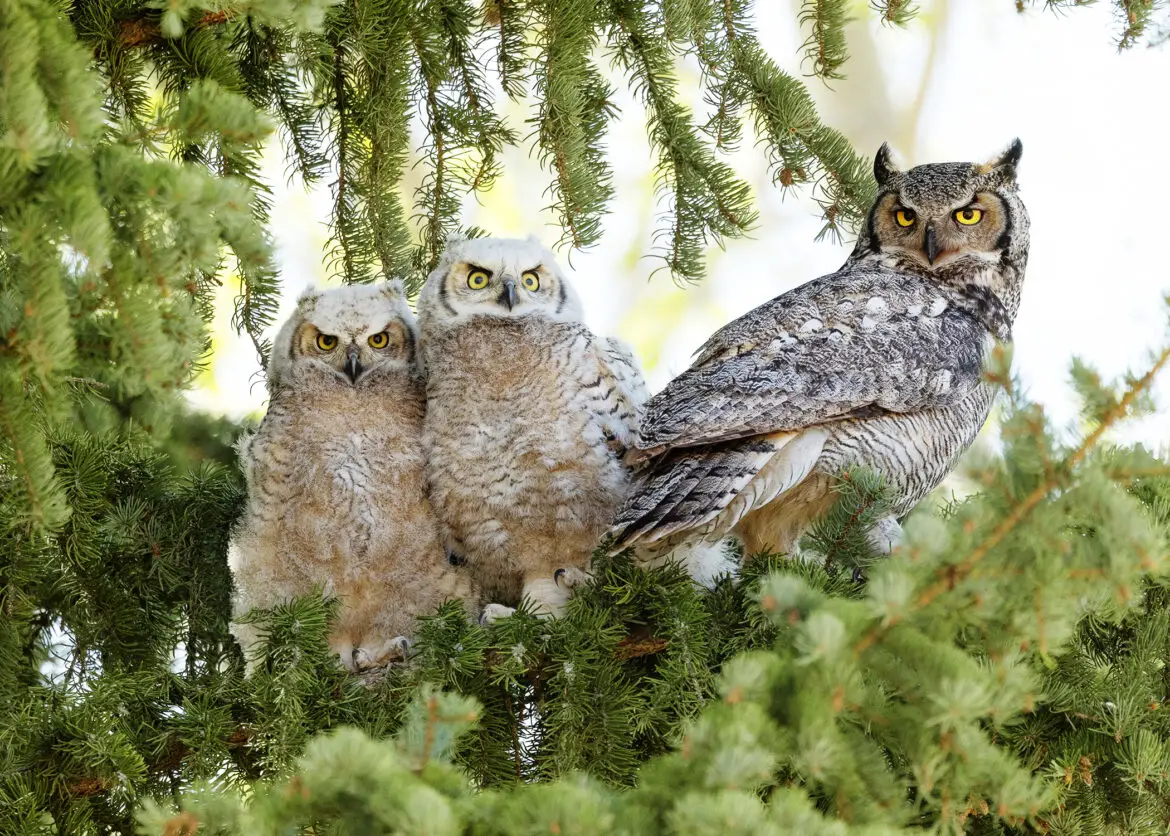Wildlife photography is without a doubt one of the most demanding photography genres, that really pushes your camera specs to the limit! With so many choices on the market, how do you pick out the camera that will be your companion through hours and hours of waiting out the perfect wildlife image?
In this article we’ll cover the camera specifications that are especially important to wildlife photographers. We hope it’ll help make the decision a little easier for you!
Table of Contents
Key Considerations
| Sensor Size | Larger sensors (full-frame) capture more light, providing better image quality. Meanwhile, options like APS-C or micro four-thirds are easier on the budget, and the crop factor helps you “get in closer” without buying longer, more expensive lenses. |
| Autofocus System | A fast and accurate autofocus system, especially with advanced tracking, is crucial for wildlife. The better your autofocus system, the better your keeper rate when going back through your shots. |
| Frames Per Second (FPS) | Higher FPS is essential for capturing dynamic wildlife scenes and fast-moving subjects. This camera spec is especially important to you if you want to capture birds in flight, or fast running animals in motion. |
| Low-Light Performance | Most animals are active at dawn and dusk, which really pushes the limits of even modern camera sensors. Your camera’s ISO range, and image quality at higher ISO’s will make a big difference to the types of light you can shoot in. |
| Lens Compatibility | The lenses you want to use will affect the brand of camera you go with. When researching lenses you’ll definitely notice differences in rendering between different manufacturers – a matter of personal preference. While you can use adapters, it’s nice to be able to use lenses on their native lens mount. |
| Weather Sealing | Weather-sealed cameras resist moisture and dust, providing durability in challenging environmental conditions. As a wildlife photographer it can be especially difficult to avoid fog, unexpected rain showers, and snow. Weather sealing on both the camera and lens is a must for us! |
| Durability | Bumps and scrapes are also very difficult to avoid during outdoor adventures, when travelling over uneven terrain and through dense forest. |
| Size and Weight | Balancing features with practicality, a compact and lightweight camera is best for mobility during wildlife expeditions. A camera may not seem too heavy until you’re carrying it on your back or arm during long hikes. |
| Battery Life | Spare batteries are always a great idea for extended trips. |
| Power Options | Compatibility with alternative power sources like battery grips, external power banks, and solar chargers can help if you travel a lot to remote locations. |
| Wireless Connectivity | Built-in Wi-Fi, Bluetooth, or NFC capabilities enable wireless control and image transfer, enhancing connectivity in the field. Most newer cameras come standard with this feature. |
| Dual Card Slots | Having two card slots provides expanded storage and a backup option in case one card fails. |
| Value for Money | Evaluate the features that align with your photography needs, balancing them with your budget. Most modern cameras are quite capable and you don’t necessarily need the most expensive body on the market. |
Our Recommended Cameras
We use a Canon R6 for all of our images. You can see lots of samples in our wildlife photography gallery!
The Canon R6 is the camera that checks all the boxes for us – we have two bodies! If you have the budget, you could opt instead for its bigger brother, the Canon R5. The main difference between the two is the larger sensor size on the Canon R5, giving you a little bit more room to crop, image quality, and boost in low light performance. Visit our gear page for all of our recommendations:
Sensor Size
When it comes to wildlife photography, the sensor size of your camera plays a pivotal role in determining the quality of your shots. Think of the sensor as the camera’s eye—bigger sensors generally capture more light, resulting in sharper images.
Full-frame sensors lead the pack, providing exceptional image quality and improved performance in low-light conditions. They typically allow for more cropping in post processing, giving you more leeway with composition. With that said, they come with a heftier price tag.
If you’re working with a tighter budget, APS-C and micro four-thirds sensors still offer impressive performance and are more budget-friendly. The lenses tend to be similarly less expensive as well.
As an added bonus, crop sensors can have the effect of making lenses seem longer than they are. A 400mm lens on an APS-C camera, for example, will have an equivalent field of view of 640mm on a full frame.
Autofocus System

A reliable autofocus system is almost a non-negotiable these days. It’s strange to say knowing that not that long ago, wildlife photographers could get by using only manual focus! But it’s undeniable that modern autofocus systems will outperform even the most skilled manual focus. It’s often the difference between getting the shot or not, and can drastically improve your keeper rate in a series of shots.
Look for a camera with a fast and accurate autofocus system. Preferably one that incorporates advanced tracking features. Many cameras these days even come with animal eye detection, which does make a difference. Phase detection autofocus is preferable to contrast detection, if you have the choice. Hybrid autofocus systems that combine the too can work too.
A camera’s autofocus is often less accurate during low light scenarios, which you’ll come across a lot as a wildlife photographer. Because every camera manufacturer will claim they have the fastest autofocus, your best bet is to watch YouTube reviews from other photographers to see real world testing and results.
Tip: The different autofocus settings can make your head spin! One of the first camera settings we change on a new body is turning on back button focus. Once you get used to it, you don’t have to worry about switching between all of the different focus settings.
Frames Per Second (FPS)
Wildlife is unpredictable, and you need a camera that can keep up! Frames per second (FPS) tells you how many images your camera can capture in a single second. This number is especially important to you if you plan to shoot birds in flight, or other extremely fast moving animals.
The higher the FPS, the better your chances of nailing that perfect shot. Just keep in mind that shooting multiple frames per second in burst mode will fill up your memory cards faster.
Low-Light Performance
Nature doesn’t always provide optimal lighting conditions. When the sun starts to dip below the horizon or you find yourself in the dense canopy of a forest, a camera’s low-light performance becomes crucial. Wildlife photographers are the lucky few photographers who find themselves in the situation almost every day they go out!
Check the camera’s ISO range; a broader range allows for better performance in low-light situations. Look for models that maintain image quality even at higher ISO settings, so that you can capture those dawn and dusk moments without sacrificing clarity. As cameras improve, we can keep shooting at higher and higher ISO’s before the image becomes a grainy, noisy mess.

Lens Compatibility
Always consider the availability and compatibility of lenses for your chosen camera. A robust selection of lenses, from wide-angles for sweeping landscapes to telephotos for distant wildlife, gives you the flexibility to tackle any photographic challenge the wild throws your way.
Consider also your room to grow. If you’re like most photographers, your lens collection will quickly become a bigger investment than your camera body. If you’re starting out with an entry level model of camera, check to see whether your lenses will still be compatible if you switch to a different camera body down the road.
With many manufacturers, this is not the case! Canon for example has totally different lenses for their entry level vs. pro level cameras. You can use lens adapters, but often it’s not the same experience as using the lenses with their native mounts. Definitely research the different lens mounts offered by your brand of choice now to avoid a surprise in the future.
Weather Sealing
Nature is unpredictable, and so is the weather. A good wildlife photography camera should be prepared to face the elements head-on. This is where weather sealing comes into play. Weather-sealed cameras are designed to resist moisture, dust, and extreme temperatures.
Not all cameras come weather sealed. In certain situations, like indoor portrait photography, it’s not really called for. But as a wildlife photographer you will most likely find yourself in a random downpour or dust storm at some point.
A weather-sealed camera and lens combination gives you that durability and reliability needed to compose the shot without worrying about what the environment will do to your camera.
Durability
Wildlife photography involves navigating rough terrain and unpredictable weather conditions. A durable camera body is your shield against the bumps, scrapes, and occasional tumbles. Pay attention to the build materials of the camera, prioritizing robust and resilient constructions. A magnesium alloy body, for example, strikes a balance between durability and weight, ensuring your camera can withstand the rigors of the wild without becoming a burden.
Size and Weight
While features and performance are crucial, the practicality of carrying your camera through the wilderness should not be overlooked. A camera that is too bulky or heavy can quickly become a hindrance, especially during long treks or when you need to react swiftly to capture fleeting moments.
If your camera is too heavy, it wont be long before you find yourself leaving it at home. Consider your own comfort and mobility; a compact and lightweight camera that doesn’t compromise on essential features could be the ideal companion for the roaming wildlife photographer.
Battery Life
The wilderness doesn’t follow a schedule, and neither should your camera! Battery life is a key factor in determining how long you can stay immersed in the field without worrying about a sudden power outage.
Look for a camera with robust battery life, especially if you plan on extended photo sessions. Consider factors like the number of shots per charge.
Carrying spare batteries can be a lifesaver too during remote expeditions where charging options are limited. Especially if you like to shoot in cold conditions, being able to keep one battery in your pocket and one in the camera will keep you shooting continuously.

Wireless Connectivity
The ability to wirelessly connect your camera opens up your ability to make back-ups before you get home. Remote control functionality allows you to set up your camera in strategic locations while maintaining control from a distance. Most modern cameras will include this feature, but if you’re in the market for an older camera, it doesn’t hurt to check.
Dual Card Slots
Having two slots not only expands your storage capacity but also provides a backup in case one card fails. This redundancy can be a lifesaver when you’re in the field, ensuring that you don’t miss a shot due to a technical glitch. Check the compatibility and types of cards your camera supports, and consider investing in high-capacity, fast-write cards for optimal performance.
Value for Money
The quest for the ideal wildlife photography camera doesn’t have to break the bank. Understanding your specific needs and balancing them with your budget is the key to finding value for money.
Consider the features that are non-negotiable for your style of photography. For example, if you prioritize a robust autofocus system for capturing fast-moving subjects, allocate a significant portion of your budget to a camera that excels in this aspect.
Conversely, if you can compromise on certain features, you might discover hidden gems in the mid-range or budget-friendly segment. If you only want to photograph birds at your back yard feeder, you might not need a huge sensor with infinite room to crop.
Conclusion
We hope this article helped you pick out a wildlife camera! The truth is, if you’re new to wildlife photography, whatever will get you out there shooting is the best camera for you! You can always upgrade later on. Happy shooting!
